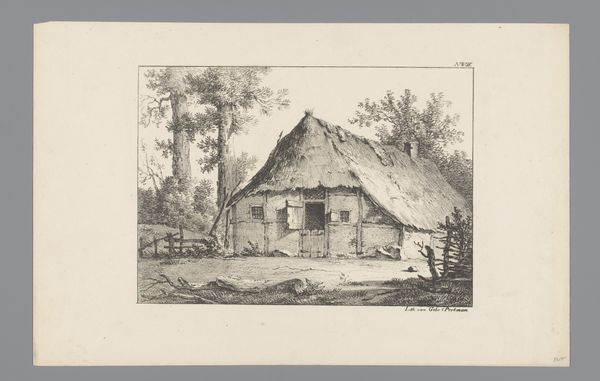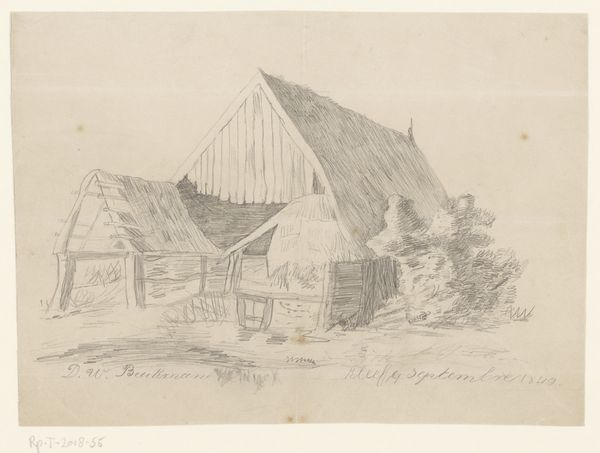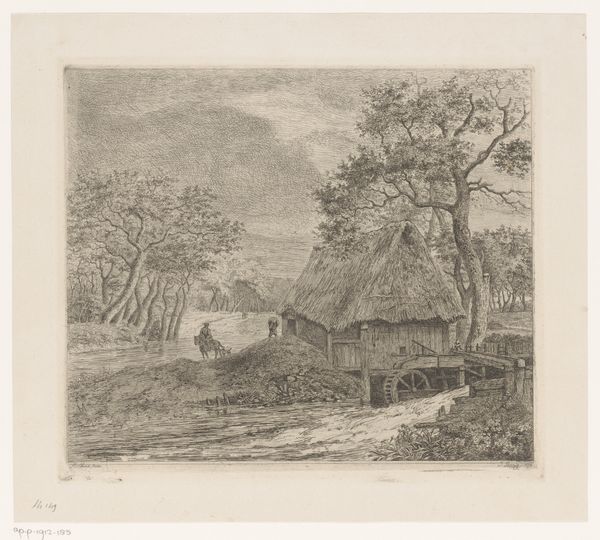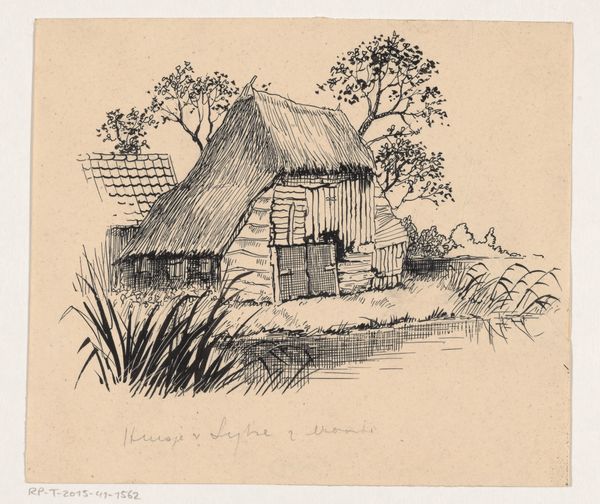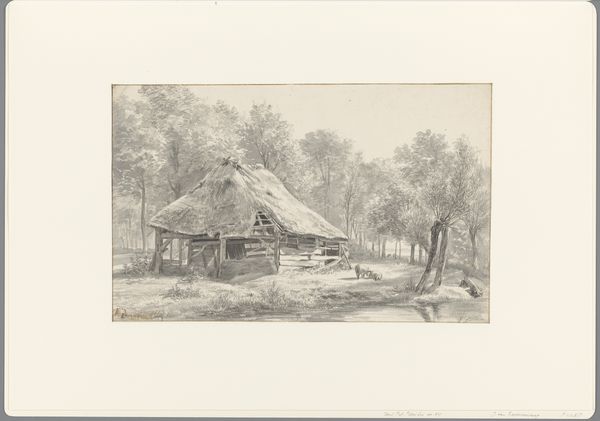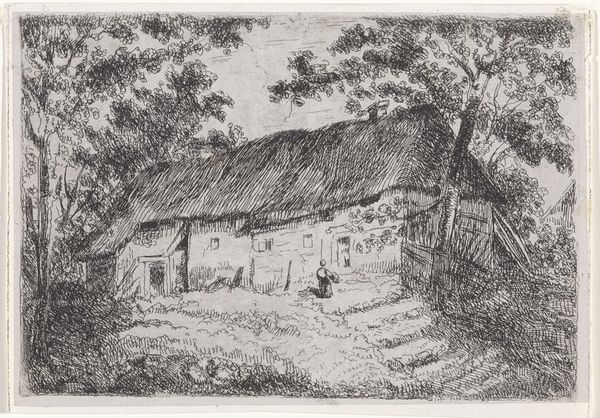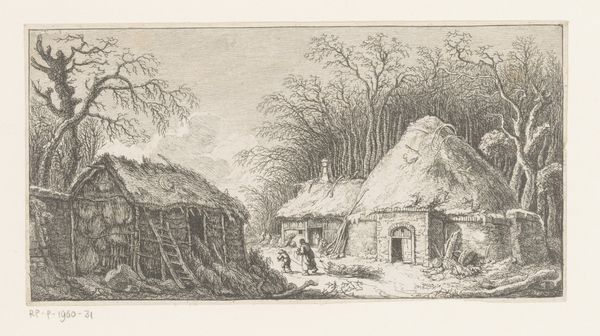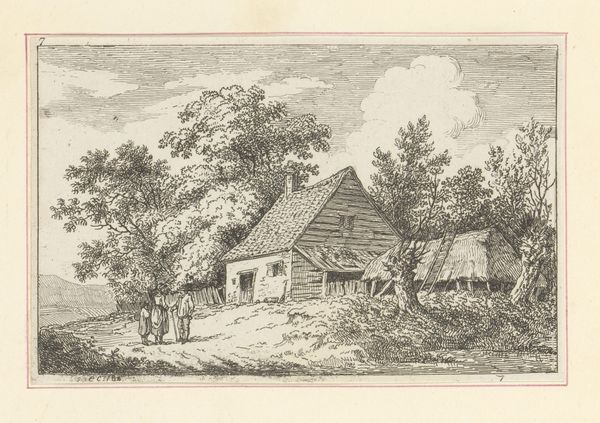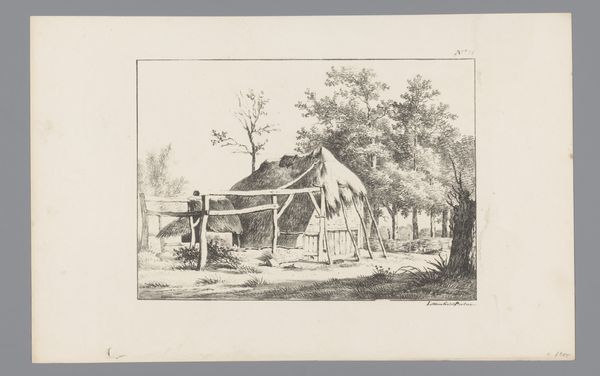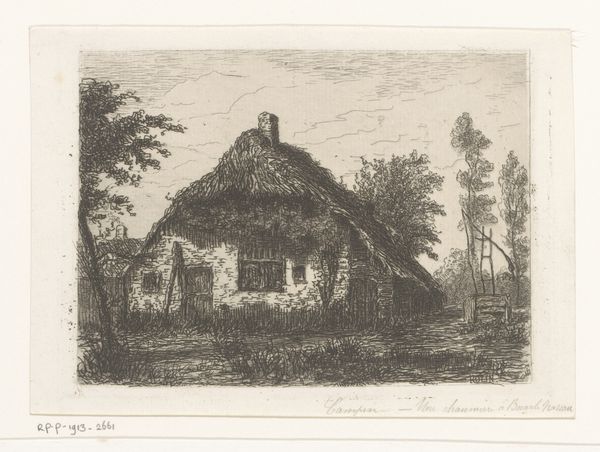
print, etching, engraving
# print
#
pen sketch
#
etching
#
pencil sketch
#
landscape
#
etching
#
genre-painting
#
engraving
Dimensions: 192 mm (height) x 228 mm (width) (plademaal)
Editor: We’re looking at "Parti i Charlottenlund," an etching by J.P. Møller from 1830. The scene depicts a rustic cottage. It’s small, intimate, and quite charming. What strikes you most about it? Curator: It's easy to see this image and simply admire the picturesque quality, but I'm interested in interrogating what this romanticized view of rural life actually represents. Who is absent from this scene, and whose labor sustains it? Does it promote a particular narrative around class and access to land in 19th-century Denmark? Editor: That's interesting! I hadn't considered the social context. I was just thinking about how peaceful it looks. The people are resting around the house, playing music. It’s like a perfect escape from the city. Curator: Exactly. And it's crucial to consider how access to that peaceful, rural ideal may be unevenly distributed, and even predicated on power imbalances of gender, class and so forth. Are we meant to yearn for this simplicity, while ignoring the underlying realities for those who actually live it? Think about whose gaze this image caters to. Editor: So you're suggesting that it presents a potentially idealized vision of the countryside? Perhaps obscuring the true working conditions and the economic realities of the people who lived there? Curator: Precisely! Consider how representations of landscape often mask underlying tensions. The lack of anyone actively working can be seen as telling. We can't just take the image at face value; we have to look deeper, past the prettiness of the scene. How would our reading change if we knew more about the history of land ownership in the area? Editor: I see your point. Looking at it now, I’m much more aware of how selective this image could be, potentially omitting a more complicated and grounded depiction. Thanks, that gives me a lot to think about. Curator: My pleasure. Let’s always remember to question the stories an artwork appears to tell, especially those of everyday life. It's often where ideology quietly resides.
Comments
No comments
Be the first to comment and join the conversation on the ultimate creative platform.


